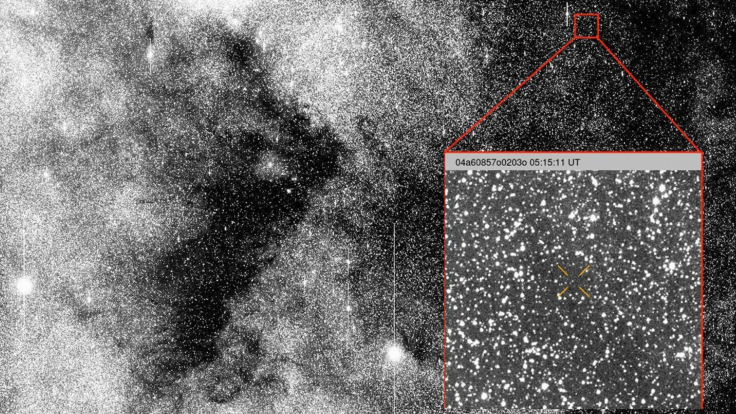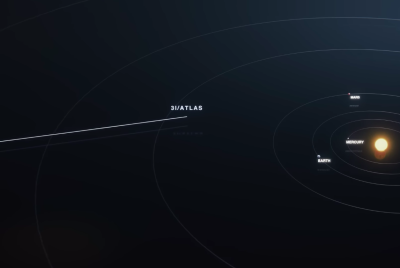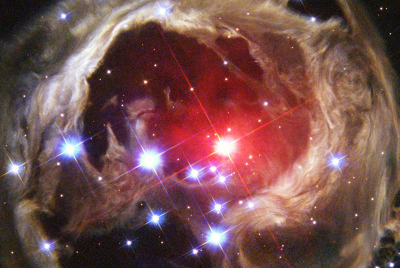Harvard Professor Warns Public to 'Take Vacations Before October 29' — Says NASA Is Concealing the Truth About 3I/ATLAS
Dr Avi Loeb believes the massive interstellar object 3I/ATLAS could be more than just a comet, while NASA remains tight-lipped amid speculation about its true nature.

A Harvard astrophysicist has set the internet ablaze after warning people to 'take vacations before October 29', claiming that NASA may be concealing vital information about a strange interstellar object hurtling through space.
The object, officially named 3I/ATLAS, is said to be roughly the size of Manhattan and has left scientists scratching their heads since its discovery.
Dr Avi Loeb, the outspoken Harvard professor known for his controversial theories about extraterrestrial life, suggested that the bizarre visitor could even be artificial in origin.
Although space agencies have been quick to reassure the public that there is no danger to Earth, the object's odd chemical emissions and unpredictable movement have fuelled a frenzy of online speculation — from alien probes to secret government experiments.
Dr Loeb has urged greater transparency from NASA, saying the world deserves to know 'what's really out there'.
His dramatic warning has divided the scientific community, with some dismissing it as sensationalism while others admit that 3I/ATLAS remains one of the most puzzling cosmic discoveries in years.
A Mysterious Visitor
3I/ATLAS was first detected in July when astronomers noticed a fast-moving object entering the solar system at almost twice the velocity of previous interstellar visitors 'Oumuamua and Borisov. Early estimates suggest it spans about 5.6 kilometres in diameter and weighs an astonishing 33 billion tons.
What makes 3I/ATLAS extraordinary is its composition. Observations from the Keck II telescope in Hawaii revealed that it emits a plume containing four grams of nickel per second — with no trace of iron.
This led scientists to identify the compound as nickel tetracarbonyl, a substance known only from industrial processes on Earth.
'There is only one place where that is known to exist and that is in industrially produced nickel alloys,' Loeb told The New York Post. 'This was never observed for any other object.'
The idea that the object could contain a metal compound created through an artificial process has stirred both intrigue and disbelief in the scientific community.
🚨 HARVARD PROFESSOR WARNS OF INTERSTELLAR OBJECT HEADED TOWARD EARTH: “TAKE YOUR VACATION BEFORE OCTOBER 29TH, 2025”
— HustleBitch (@HustleBitch_) October 20, 2025
Professor Avi Loeb says 3I/ATLAS, an interstellar object from beyond our solar system, is closing in fast.
“I don’t know if there will be meaning to money if… pic.twitter.com/8zzK0ly7An
Loeb's Warning and NASA Allegations
In a recent podcast interview, Dr Loeb claimed that NASA has not been transparent about its findings and urged the public to 'take vacations before October 29', hinting that the coming weeks could bring significant revelations — or even events.
He argues that the government's delayed release of Mars Orbiter images, which allegedly captured 3I/ATLAS passing close to Mars, adds to suspicions of concealment. 'Who cares about the communication departments? We want to see the data from the scientists,' Loeb said.
Loeb also pointed to several anomalies that challenge the natural comet theory. Unlike ordinary comets, 3I/ATLAS's jet of gas points toward the Sun instead of away from it. Its orbit also aligns within five degrees of the planetary ecliptic plane — something Loeb describes as 'a one-in-500 coincidence'. He suggests this strange precision could hint at 'fine-tuning', a hallmark of design rather than randomness.
The Scientific Explanation
Despite Loeb's provocative claims, astronomers from the University of A Coruña in Spain have conducted a detailed simulation tracing the object's path through the galaxy. Their findings, which are awaiting peer review, suggest no evidence of artificial interference.
'We identified 93 potential stellar encounters, but none had any significant effect on its orbit,' the researchers wrote. Their analysis indicates that 3I/ATLAS likely originated from the galaxy's thin disk — an ancient region of space — and may be up to 10 billion years old.
Dr Pérez Couto, one of the study's authors, explained, 'Each observation is like opening a window into the Universe's past. It allows us to study the evolution of materials that were formed around other stars.'
NASA scientists have also dismissed the idea of any threat to Earth, stating that 3I/ATLAS will safely pass the inner solar system without incident.
Could It Be Something More?
Still, Loeb remains unconvinced. Known for his controversial views on extraterrestrial technology, he insists that science must remain open to all possibilities. 'If it was designed by intelligence, you would not be able to predict exactly what it would do,' he said. 'It's like finding a visitor in your backyard.'
For Loeb, the object's sheer size, strange emissions, and improbable orbit suggest something beyond a simple comet.
Critics, however, argue that Loeb's warnings are exaggerated and that his 'October 29' comment is more symbolic than apocalyptic — perhaps marking the expected window for new data or another significant observation.
As for NASA, the agency has yet to comment on Loeb's recent remarks, leaving both scientists and the public to speculate.
Whether 3I/ATLAS turns out to be a natural relic from the dawn of the galaxy or something entirely unexpected, it has reignited a timeless question: are we truly alone in the universe?
One thing is certain — all eyes are now on October 29.
© Copyright IBTimes 2025. All rights reserved.





















